Abstract
Phenoxybenzamine antagonized the inhibitory action of acetylcholine on the guinea-pig isolated atrium. The antagonism was slow in onset, very slowly reversible, and could be overcome by increased concentrations of acetylcholine. In contrast, atropine inhibited the action of acetylcholine quickly, and the effect disappeared soon after withdrawal. The pA10 of phenoxybenzamine (2 hr of contact) was 6.8, and that of atropine (30 min of contact) was 8.4. In the presence of atropine phenoxybenzamine did not exert a slowly reversible antagonism, and the dose-ratio of acetylcholine returned to normal soon after withdrawal of both drugs. Phenoxybenzamine also antagonized acetylcholine in the guinea-pig isolated ileum, but with higher concentrations acetylcholine did not overcome the antagonism. The pA10 (60 min of contact) was 6.6. The pA10 of chlorpromazine in the atrium (2 hr of contact) and ileum (60 min of contact) was 5.9. Phentolamine, 2-diethylaminomethylbenzo-1,4-dioxan hydrochloride (883 F), and yohimbine antagonized acetylcholine in the atrium and ileum but required higher concentrations than chlorpromazine.
Full text
PDF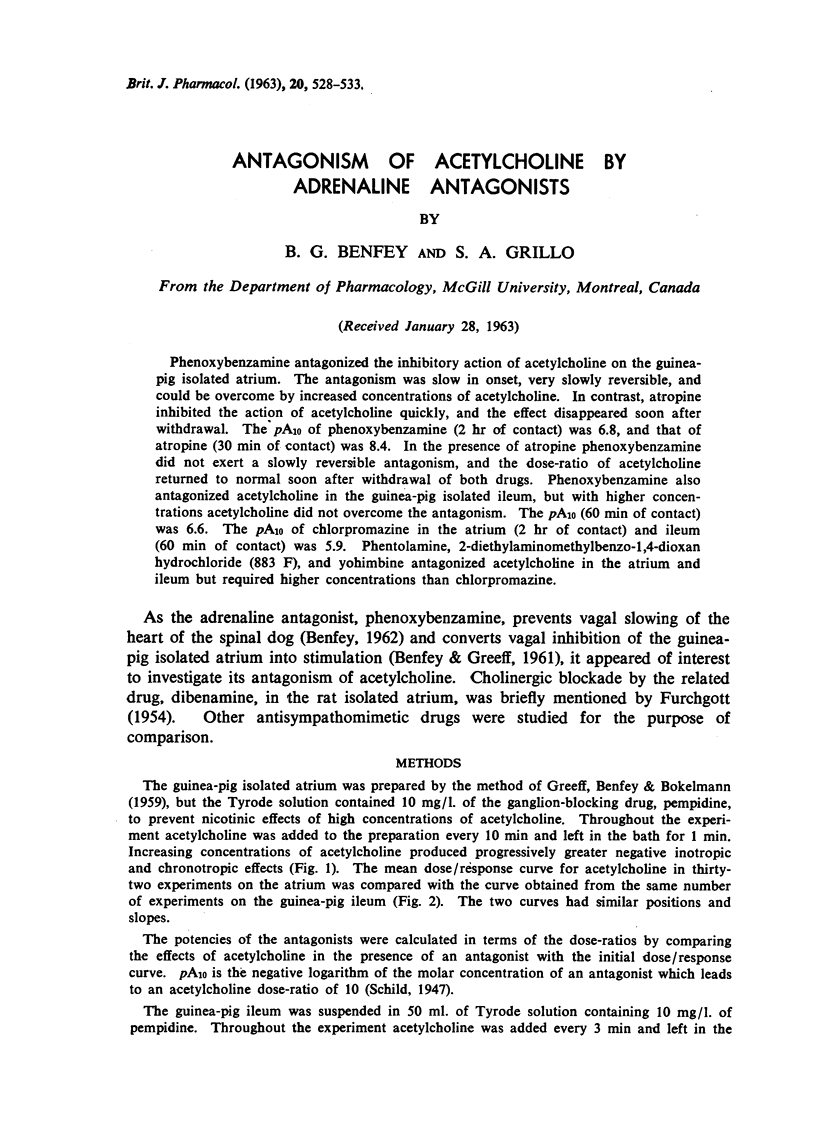
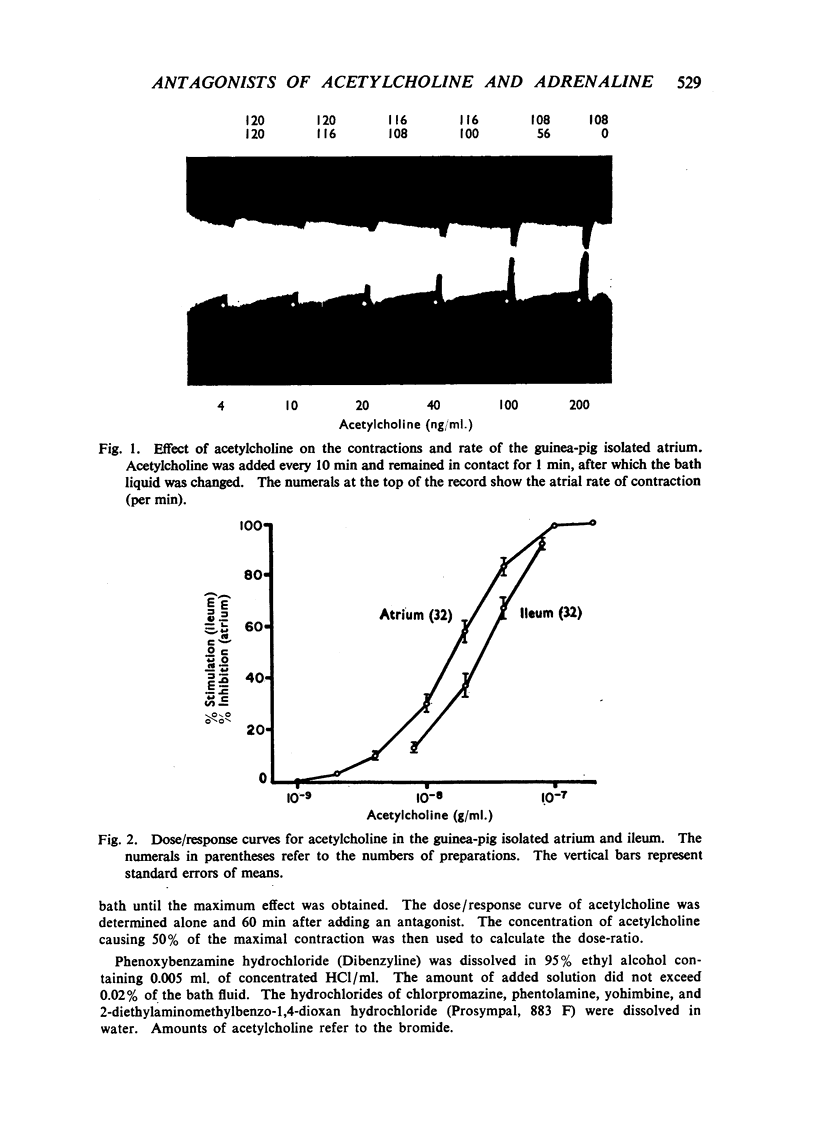
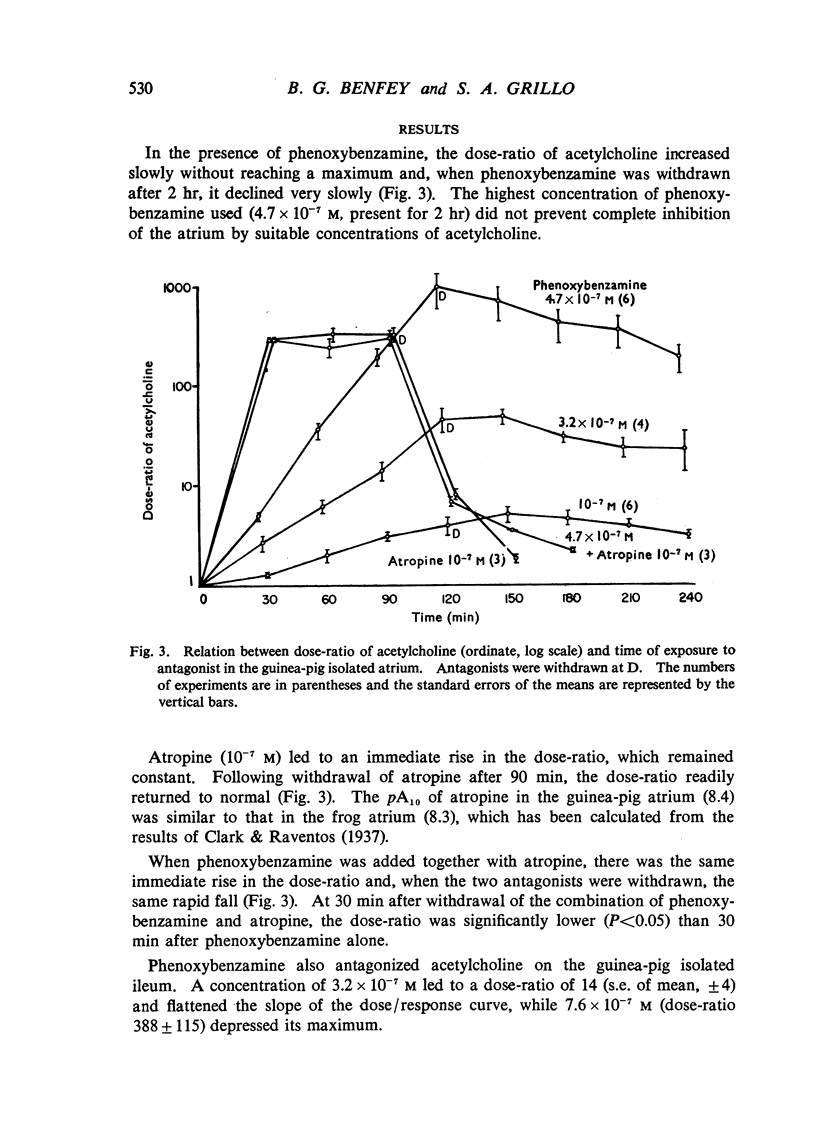
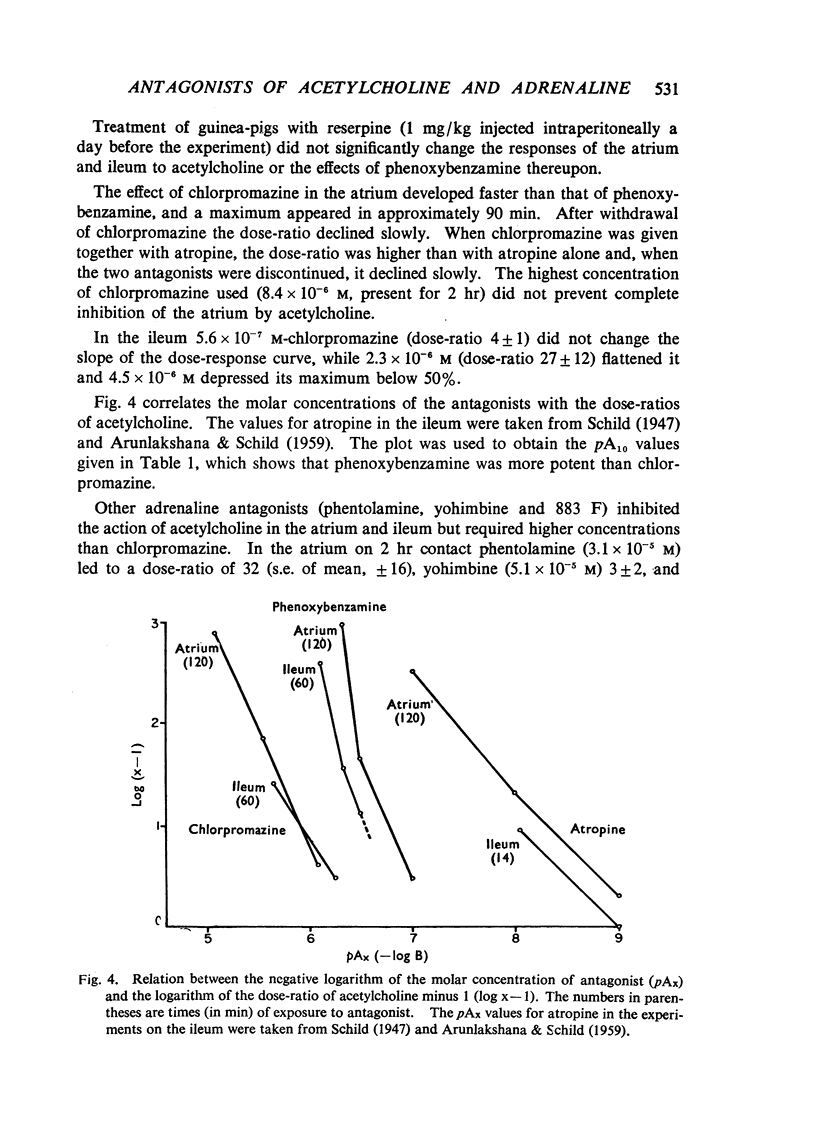

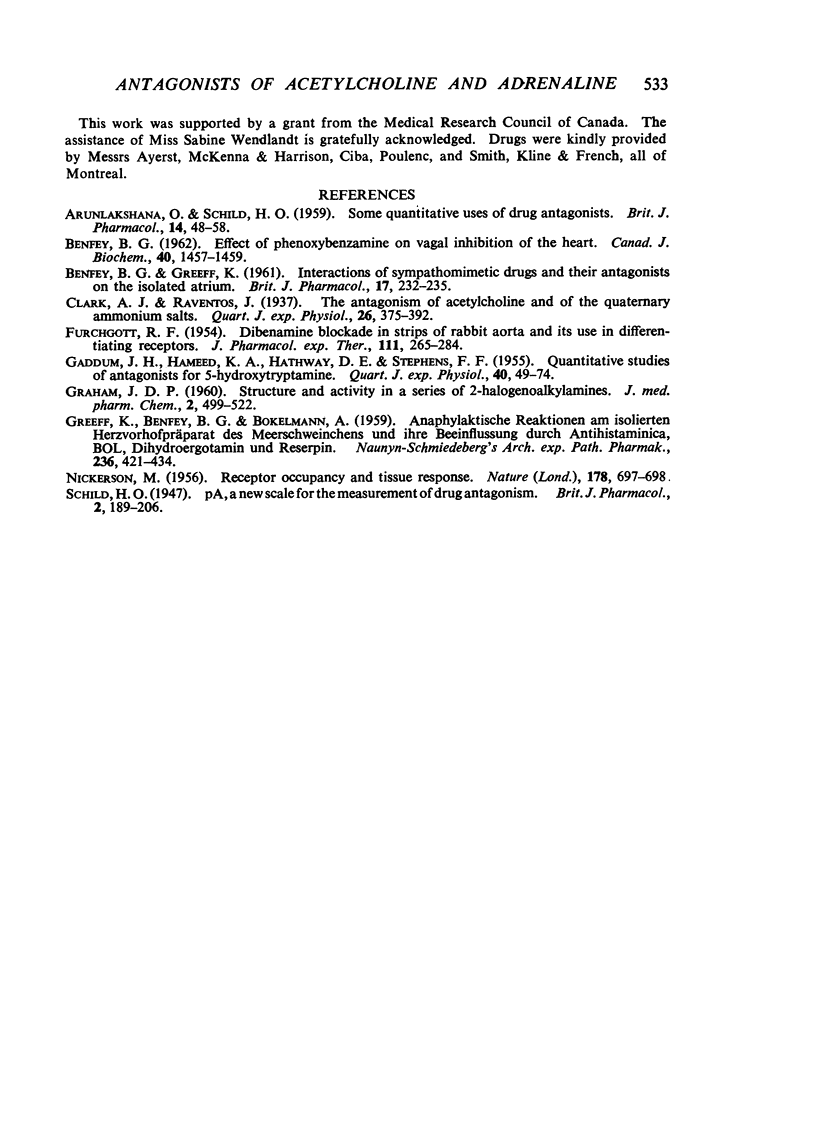
Selected References
These references are in PubMed. This may not be the complete list of references from this article.
- ARUNLAKSHANA O., SCHILD H. O. Some quantitative uses of drug antagonists. Br J Pharmacol Chemother. 1959 Mar;14(1):48–58. doi: 10.1111/j.1476-5381.1959.tb00928.x. [DOI] [PMC free article] [PubMed] [Google Scholar]
- BENFEY B. G. Effect of phenoxybenzamine on vagal inhibition of the heart. Can J Biochem Physiol. 1962 Oct;40:1457–1459. [PubMed] [Google Scholar]
- BENFEY B. G., GREEFF K. Interactions of sympathomimetic drugs and their antagonists on the isolated atrium. Br J Pharmacol Chemother. 1961 Oct;17:232–235. doi: 10.1111/j.1476-5381.1961.tb01283.x. [DOI] [PMC free article] [PubMed] [Google Scholar]
- FURCHGOTT R. F. Dibenamine blockade in strips of rabbit aorta and its use in differentiating receptors. J Pharmacol Exp Ther. 1954 Jul;111(3):265–284. [PubMed] [Google Scholar]
- GADDUM J. H., HAMEED K. A., HATHWAY D. E., STEPHENS F. F. Quantitative studies of antagonists for 5-hydroxytryptamine. Q J Exp Physiol Cogn Med Sci. 1955 Jan;40(1):49–74. doi: 10.1113/expphysiol.1955.sp001097. [DOI] [PubMed] [Google Scholar]
- GRAHAM J. D. Structure and activity in a series of 2-halogenoalkylamines. J Med Pharm Chem. 1960 Oct;2:499–522. doi: 10.1021/jm50012a003. [DOI] [PubMed] [Google Scholar]
- GREEFF K., BENFEY B. G., BOKELMANN A. [Anaphylactic reactions in the isolated guinea pig auricle preparation and their influencing by antihistaminics. BOL, dihydroergotamine and reserpine]. Naunyn Schmiedebergs Arch Exp Pathol Pharmakol. 1959;236:421–434. [PubMed] [Google Scholar]
- NICKERSON M. Receptor occupancy and tissue response. Nature. 1956 Sep 29;178(4535):697–698. doi: 10.1038/178697b0. [DOI] [PubMed] [Google Scholar]


